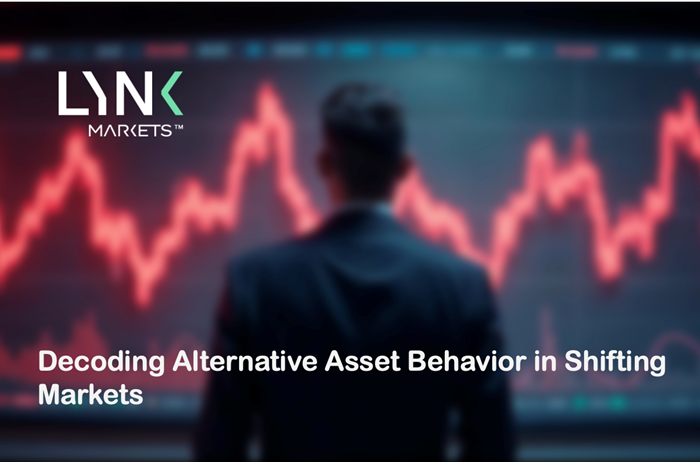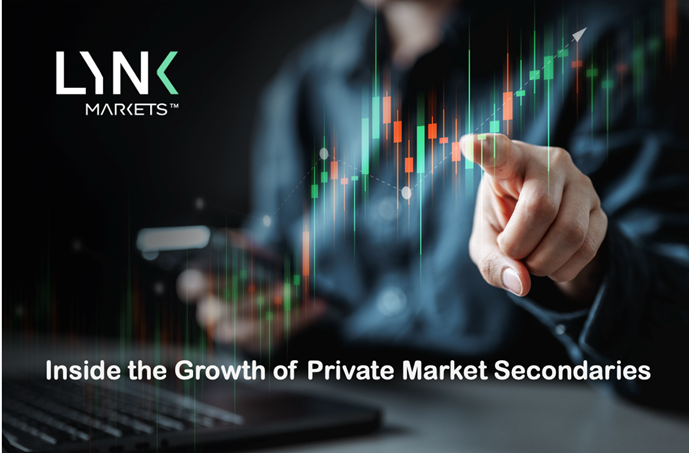LYNK MARKETS Q&A HUB
We created this space to answer the most common questions about our platform and help you better understand how we connect asset managers and financial advisors.
This Q&A Hub is for informational purposes only and does not constitute an offer, recommendation, or commercial commitment by LYNK Markets.
Asset Managers / Fund Managers / Portfolio Managers
What is the fastest and most cost‑efficient way to distribute my investment strategy in Latin America and offshore without creating local vehicles in each country?
Use a single global-ISIN exchange-traded note (ETN) that settles through Euroclear or Clearstream to distribute the strategy across multiple jurisdictions without forming separate local funds. This allows wealth managers to subscribe from their existing custody accounts and reduces time-to-market.
Which structures (ETNs, feeder funds, etc.) exist to package and distribute funds internationally, and which is most efficient?
Managers can choose between feeder funds, separately managed accounts (SMAs), private notes and ETNs. For broad, fast distribution with low minimums, a global-ISIN ETN is usually the most efficient option.
What are the benefits of securitizing my strategy into an ETN versus traditional structures?
ETNs shorten launch timelines, lower fixed costs, provide a single global ISIN and offer secondary-market-like liquidity, whereas traditional local funds and feeders require lengthy registrations and higher expenses.
How can I increase the visibility of my alternatives products with global wealth managers and financial advisors?
Combine a listed vehicle (e.g., an ETN) with digital marketplace presence, educational content and targeted outreach to advisors to raise your strategy’s profile with wealth managers.
Which digital platforms let me list my strategy alongside renowned managers and reach more institutional investors?
Listing on exchanges such as SIX or Vienna and joining curated alternatives marketplaces enables your strategy to appear alongside established managers and reach a broader institutional audience.
How can I reduce costs and timelines when creating and packaging structured notes or private funds?
Use standardized securitization platforms and pre-approved documentation to issue ETNs or similar notes, which compress launch timelines and lower legal and operational costs.
How do rebates and trailer fees work, and how can they impact AUM growth?
Rebates and trailer fees are basis-point-based payments to advisors for distributing and servicing a product; when transparent and well-managed, they align incentives and can accelerate asset growth.
What digital tools simplify regulatory compliance and due diligence in new markets?
Platforms offering centralized KYC/AML onboarding, independent audits and standardized reporting help managers meet diverse regulatory requirements when entering new markets.
How can I expand my reach and access new capital markets without costly intermediaries?
Issue a globally recognized security (such as an ETN) that settles through central depositories, allowing direct subscription by wealth managers and avoiding local middlemen.
How can I use AI and engagement data to anticipate demand for new products?
Analyze engagement metrics—such as search queries, click-through rates, webinar attendance and time spent on factsheets—to gauge investor interest and priorities new product launches.
Wealth Managers
Where can financial advisors find alternatives (private credit, real estate, hedge funds) in a single marketplace?
Look for specialized alternatives marketplaces that aggregate offerings across private credit, real estate and hedge funds and provide standardized information and due diligence.
What advantages do ETNs offer versus investing directly in offshore funds (costs, minimums, liquidity)?
ETNs typically have lower minimum investment requirements, competitive total costs and T+2 liquidity, whereas direct offshore funds require larger tickets and may have infrequent redemption windows.
How can I diversify clients’ portfolios with international products in a simple and regulated way?
Add regulated vehicles with global ISINs—such as ETNs—that provide international exposures and are backed by standardized due-diligence reports and transparent governance.
What solutions exist to invest in international funds without costly KYC/AML for each client?
Choose investment vehicles that centralize KYC/AML at the product level so that each client only completes onboarding once, rather than for each underlying fund.
How can clients gain exposure to higher‑yielding assets, like private credit or real estate, with a lower ticket size?
Use fractionalized vehicles such as ETNs or tokenized funds that package private credit or real estate strategies and accept smaller minimum investments.
How can I discover boutique managers with differentiated strategies for sophisticated clients?
Utilize curated marketplaces and due-diligence tools that filter managers by strategy, region and risk profile, and provide transparent performance data.
Which key metrics should I evaluate to measure risk and liquidity in structured products?
Assess volatility, drawdown, duration, convexity, collateral quality, liquidity windows and payment waterfalls to understand a structured product’s risk and liquidity profile.
Which innovations are democratizing access to investments once exclusive to institutions?
Regulated tokenization, fractionalization, fintech ETNs and digital marketplaces are lowering minimums, increasing transparency and broadening access to private assets.
Which digital solutions simplify the management, analytics and reporting of alternatives portfolios?
Portfolio management platforms that consolidate positions, perform risk analytics and automate reporting help advisors oversee alternatives more efficiently.
How do incentives or rebates for financial advisors work, and how do they benefit me?
Incentive payments—such as rebates and trailer fees—compensate advisors for placing and servicing a product; when transparent, they encourage advisors to support the product, potentially increasing distribution and AUM.
Industry Insights
What are alternative investments and why are they attractive versus traditional assets?
Alternative investments encompass non-traditional asset classes—such as private equity, private credit, real estate, infrastructure and hedge funds—that may offer higher returns, diversification and illiquidity premia compared with stocks and bonds.
What current trends are transforming the distribution of alternative investments?
Digitalization, tokenization, the rise of evergreen funds and increasing allocations from wealth investors are reshaping how alternatives are packaged and sold.
Which technological innovations (tokenization, marketplaces, fintech ETNs) are revolutionizing capital markets?
The combination of blockchain-based tokenization, fintech-powered ETNs and digital marketplaces is transforming issuance, trading and settlement in capital markets.
What regulatory challenges do asset managers face when distributing in emerging markets, and how can they be overcome?
Managers must navigate heterogeneous regulations, capital controls and KYC/AML requirements; using a single global vehicle with centralized compliance and partnering with experienced local providers can mitigate these challenges.
What benefits do liquid financial products offer versus traditional private‑markets funds?
Liquid alternative products generally have smaller minimums, quicker settlement (often T+2) and more frequent pricing, allowing investors to adjust positions more easily than in traditional closed-end funds.
How can emerging managers build trust with sophisticated advisors?
Transparent reporting, a verifiable track record, independent audits, strong governance and clear communication are key to earning advisors’ confidence.
How should I compare alternatives to traditional assets in terms of return, risk and liquidity?
Use risk-adjusted return metrics (e.g., Sharpe ratio, Sortino ratio), examine correlations to traditional assets and evaluate liquidity horizons and redemption terms.
What opportunities exist in private credit, real estate and infrastructure in emerging markets?
Growing infrastructure needs, demographic expansion and lower correlations to developed markets create attractive opportunities in private credit, real estate and infrastructure in emerging economies.
How can I incorporate ESG criteria into alternative investment strategies?
Define ESG objectives and material metrics (e.g., emissions, job creation), apply exclusions and best-in-class screening, and integrate reporting into investment and monitoring processes.
What growth trends are projected for private markets in 2025–2030?
Forecasts suggest that private markets assets under management could grow from around $16.8 trillion to over $30 trillion by 2030, driven by increased allocations from wealth investors, the rise of evergreen funds and technological innovations like tokenisation.
The information provided in this Q&A Hub is for general informational purposes only and does not constitute an offer to sell, a solicitation of an offer to buy, or a recommendation regarding any financial instrument, investment product, or service. Nothing contained herein should be construed as legal, tax, or investment advice, nor as creating any commercial commitment or contractual obligation by LYNK Markets. While the content seeks to explain industry practices and our products in a simplified manner, readers should consult their own professional advisors before making any financial or investment decisions.

